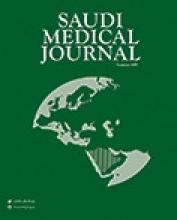Abstract
OBJECTIVE: To investigate the effects of a Chinese herb Cordyceps sinensis (C. sinensis) extract on hypoxia-induced proliferation and the underlying mechanisms involved.
METHODS: This prospective study was carried out at the Central Laboratory of Yichang Central People's Hospital, Yichang, China from March 2008 to April 2010. The C. sinensis was extracted from the Chinese herb C. sinensis using aqueous alcohol extraction techniques. Forty healthy adult male Sprague Dawley rats were used in the study. The proliferation of pulmonary artery smooth muscle cells (PASMCs) was measured using 3-(4,5-dimethylthiazol-2-Yl)-2,5-diphenyltetrazolium bromide (MTT) assay, and cell viability was determined by trypan blue exclusion. Cell cycles were analyzed using FACSort flow cytometric analysis. The expression of proliferating cell nuclear antigen (PCNA), c-jun, and c-fos in rat PASMCs was determined by immunohistochemistry.
RESULTS: We found an increased proliferation of PASMCs and increased expression of transcription factors, c-jun and c-fos in PASMCs cultured under hypoxic conditions. The C. sinensis extract significantly inhibited hypoxia-induced cell proliferation in a dose-dependent manner. In addition, C. sinensis extract also significantly inhibited the expression of PCNA, c-jun, and c-fos in these PASMCs.
CONCLUSION: Our results indicated that C. sinensis extract inhibits hypoxia-induced proliferation of rat PASMCs, probably by suppressing the expression of PCNA, c-fos, c-jun, and decreasing the percentage of cells in synthesis phase, second gap phase, and mitotic phase in cell cycle (S+G2/M) phase. Our results therefore, provided novel evidence that C. sinensis extract may be used as a therapeutic reagent in the treatment of hypoxic pulmonary hypertension.
- Copyright: © Saudi Medical Journal
This is an open-access article distributed under the terms of the Creative Commons Attribution-Noncommercial-Share Alike 3.0 Unported, which permits unrestricted use, distribution, and reproduction in any medium, provided the original work is properly cited.






